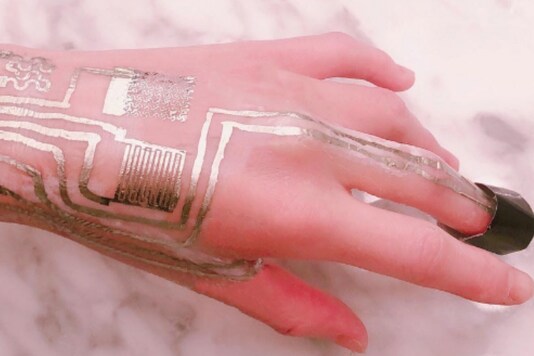What if you could have a biometric sensor printed on your body?
Smart Watches, electrodes, and other bendable devices have been used to measure highly precise biometric measurements while taking care of users’ comforts. Many of us have used them- from simple fitness bands to complex medical devices for heart patients.
According to researchers, wearable sensors will now be printable, like a temporary tattoo on the human skin. They also claim this printing can be achieved without the use of heat!
Huanyu "Larry" Cheng from Cheng, Dorothy Quiggle Career Development Professor in the Penn State Department of Engineering Science and Mechanics led the team that made this science-fiction style device a reality. Their findings can be found in the journal ACS Applied Materials & Interfaces. His co-author is a researcher from the Harbin Institute of Technology in China and in Cheng's laboratory, Ling Zhang.
“In this article, we report a simple yet universally applicable fabrication technique with the use of a novel sintering aid layer to enable direct printing for on-body sensors,” said Zhang to Techexplore.
Cheng had tried to develop 'flexible printed circuit boards' for use in wearable sensors previously. However, printing it directly on the skin has been impossible so far due to the bonding process for the metallic components in the sensor.
A process called sintering is the usual method used for such bonding. In this process, the sensor’s silver nanoparticles are bound together under high temperatures, nearly 572 degrees Fahrenheit (300 degree Celsius).
As one may guess, human skin cannot survive such a high temperature. Average human body temperature is 37.2°C. Minor burns can occur at 45 whereas 300 is enough to wreck a body completely.
“To get around this limitation, we proposed a sintering aid layer—something that would not hurt the skin and could help the material sinter together at a lower temperature,” said Cheng.
They managed to lower the temperature requirement for sintering to 212 F (100 C) by adding nanoparticle to this mix. Cheng agrees that while suitable to print on clothes, 100 can still burn the skin. Their solution- a polyvinyl alcohol paste aid layer between the skin and the sensor. The paste is often used in peel-off face masks.
The sensor is capable of measuring heart rate, oxygen, humidity, and temperature. Cheng said the results were ‘profound.’ The sensor can last for days in regular water and a hot shower will remove it, without damaging the skin, he added. It is also more environment-friendly than popular sensors.
The team thinks they can manage to target the monitoring of particular symptoms associated with COVID-19 with this on-body sensor.
